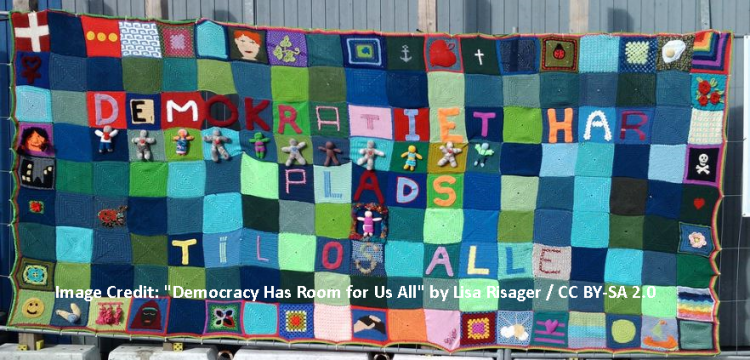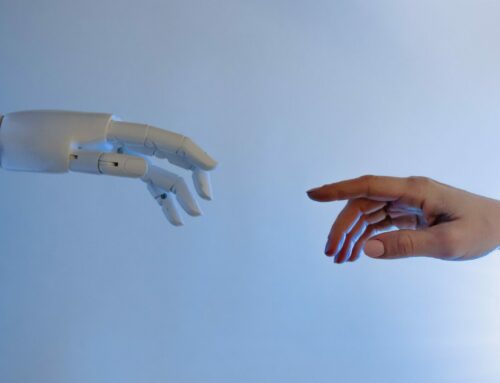Why higher education must be more inclusive
Patrick Blessinger
St. John’s University (NYC) and International HETL Association
The Cyrus Cylinder is widely considered to be the world’s first charter of human rights. Created in 539 BC by Cyrus the Great, King of Persia, it declared religious tolerance for all.
In addition, the modern human rights movement can be traced to two key political revolutions in the late 18th century: the American Revolution and the French Revolution. The two key documents to emerge from these revolutions were the US Bill of Rights and the French Declaration of the Rights of Man and of the Citizen. Both documents emphasised political and civil rights.
The rights codified in these documents were not, however, initially extended to all people in those nations, most notably women and minorities. For instance, it took a civil war in the United States, and other national movements, to extend basic constitutional rights to all people.
Universal human rights
The second modern human rights movement occurred in the aftermath of World War II and in direct response to the extreme atrocities committed by some groups during World War II. In response to those extreme human rights violations, representatives of the world community came together in 1948 (through the United Nations) to adopt the Universal Declaration of Human Rights or UDHR.
During World War II, human rights violations were so extreme that it became clear and urgent that a universal consensus document was needed to explicitly and unequivocally define those basic inalienable human rights that are applicable to all people in all nations.
Initially, the modern human rights movement addressed mainly political, economic and social rights, but more recently, it has also addressed indigenous rights of former colonised nations, as well as refugee and children’s rights.
The adoption of the UDHR was a major milestone in the development of the social evolution of humanity.
Although the UDHR is not, strictly speaking, legally binding, the ideals of the UDHR are given legal status in such documents as The International Covenant on Civil and Political Rights (United Nations, 1966a) and The International Covenant on Economic, Social and Cultural Rights (United Nations, 1966b), both of which form The International Bill of Human Rights or the IBHR. The IBHR does have the effect of international law.
In addition to the IBHR, there are other numerous international declarations, conventions and treaties concerning the right to education that are recognised as having the effect of international law.
Human rights defined
The UDHR was the first universal declaration that clearly defined those rights that all humans are entitled to by virtue of being human. As such, human rights are considered moral rights and they contain at least four key qualities: they are natural rights, they are equal rights, they are inalienable rights and they are universal rights. Although these qualities are distinct, they also overlap.
Equal means that everyone is entitled to be treated the same with respect to these rights, regardless of race, ethnicity, sex, gender, class, religion or any other characteristic. Inalienable means that they cannot be denied or taken away. Universal means that they are common rights for everyone, regardless of nationality, culture or location. Natural means that their validity or existence is not contingent upon legal rules or cultural norms of a nation but rather they are derived from and based on moral reasoning and ethical principles. In other words, these rights are inherent to being human.
Throughout human history, inhumane laws have been enacted that have violated basic human rights such as laws allowing slavery, genocide, religious persecution, ethnic intolerance and other forms of extreme oppression.
So, the rule of law is important, but it must be a humane rule of law where the humaneness is grounded in principles of universal rights and justice. As such, the idea of human rights extends to any system or practice where power and privilege has the potential to monopolise resources and exploit people.
In the absence of humane rules and ethical principles (for example, a system of checks and balances), it is unfortunately all too easy for power to be abused. Human rights, among other purposes, therefore serve to protect those with little or no power against the potential abuses of power from those who have it.
Human rights help ensure that one person or group does not subjugate or otherwise exploit others. Human rights help increase the ability of people to act with volition as self-determining moral agents.
The human right to education
Although human rights abuses still exist in various parts of the world, the human race now has universal declarations and international laws that define basic rights and thus serve as a benchmark by which to evaluate all societies.
For instance, as mentioned in Article 3 of the UDHR, every human has the right to life, liberty and security of person. If these three rights are considered base rights then other rights should flow from these base rights, such as the right to self-determination and the right to freedom of expression, for example.
As mentioned earlier, human rights need not be codified in law to be valid, but when they do become codified in law, they are called civil rights. For instance, with respect to education, every effort should be made to ensure equal and equitable treatment of people with respect to how educational resources are allocated and the educational opportunities afforded to all people.
Finally, UNESCO/UNICEF (2007) made three important distinctions and definitions concerning the right to education: the right of access to education, the right to quality education, and the right to respect within the learning environment.
Defined this way, these rights have huge implications for how educational resources are allocated, the roles of all parties within the educational system and how all parties are treated within the educational system. Thus, understanding education as a human right provides the moral and legal basis for inclusion and diversity in education at all levels.
Patrick Blessinger is an adjunct associate professor of education at St John’s University in New York City, USA, and chief research scientist for the International Higher Education Teaching and Learning Association. This article is based on the book, Inclusive Leadership in Higher Education, by Patrick Blessinger and Lorraine Stefani, in which they and several educational scholars from around the world examine and explain the necessity for inclusion in higher education.
Note: this article also appears in the University World News blog at http://www.universityworldnews.com/article.php?story=20161216000610615
Suggested Citation:
Blessinger, P. (2016). Why higher education must be more inclusive. Higher Education Tomorrow, Volume 4, Article 9, https://www.patrickblessinger.com/why-higher-education-must-be-more-inclusive
Or
Blessinger, P. (2016). Why higher education must be more inclusive, University World News, http://www.universityworldnews.com/article.php?story=20161216000610615
Copyright © [2016] Patrick Blessinger
Disclaimer
Opinions expressed in this article are those of the author, and as such do not necessarily represent the position(s) of other professionals or any institution.




